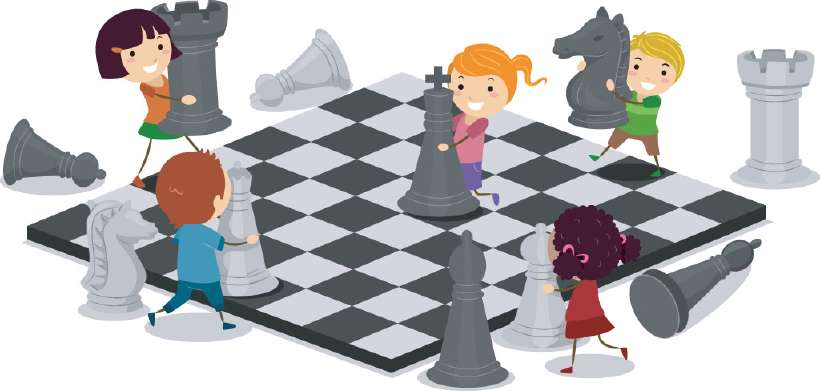Chess for Children: A Smart Move
Home / Non Fiction for Kids / Features for Kids / Chess for Children: A Smart Move
When we think of chess we think of two adults sitting opposite each other, thinking of ways and means to outsmart the other. Many people feel it is a very difficult game. But do you know that most chess players and champions start very young?
Viswanathan Anand, number two in the world, played his first chess game at the age of five. This was in 1974. Anand’s mother taught him the game and was his first opponent. In no time he came to be called the Lightning Kid. This was because he made his moves with such speed. In 1987, Anand won the world junior championship, in the Philippines. He was the first Asian ever to do so.
Take the example of world champion Jose Raul Capablanca of Cuba. He was born in 1888 and picked up chess at the age of four by watching his father play. Capablanca Jr’s father was his first opponent. Similarly, Sammy Reshevsky of Poland also made his first moves on the chessboard at the age of four. By 1920, at the age of eight, he was busy touring the cities of Europe as the ‘wonder boy’ who could outplay adults.
In India, the success of Viswanathan Anand has encouraged many youngsters to take to chess. Curly haired Koneru Humpy from the southern Indian state of Andhra Pradesh learnt chess at the age of six from her father. The youngster won the World under-10 Championship at Cannes, France, in 1997. In 2002, at the young age of 15 years, four months and 28 days, Humpy joined the select batch of world class chess masters, called Grandmaster or GM. Her inspiration? Judith Polgar of Hungary, who earned the title of Grandmaster in 1991 at the age of 15 years and four months.

But Humpy was not the youngest from India to become a Grandmaster. A little earlier, Pentyla Harikrishna, also from the same state as Humpy, had become a Grandmaster at the age of 15 years, three months and five days! Harikrishna learnt chess from his grandfather when he was five years old.
But these young players have faced stiff competition from another ‘master’. Parimarjan Negi, from India’s capital Delhi, became the second youngest player in the world to get the title of Grandmaster in July 2006. He was 13 years, four months and 22 days old. Sergey Karajakin of Ukraine holds the record for the youngest player to become a Grandmaster. He was 12 years and seven months in 2002 when he achieved this feat! Clearly, these youngsters believe in the slogan ‘chess for children’ rather than only ‘chess for adults’.
It is also true that not everyone who plays the sport becomes a champion. Yet, it is a fact that the world has become chess crazy, especially as far as chess for children is concerned. In India, the southern city of Chennai was for long called the chess capital of India. After all it produced champions like Viswanathan Anand, Manuel Aaron and V. Ravi Kumar. Today the craze has spread across the country. The number of chess clubs has increased, as well as the number of tournaments played through the year. In Russia and several other European countries, as well as in Canada, chess is part of the school curriculum.

In fact this is one game that helps the player in many, many ways and not only on the chess board. To play better, it becomes necessary to read chess books. So no one will accuse you of not being interested in reading! You have to be able to keep scores, so your arithmetic gets strengthened. More importantly, you are the general of your army on the board and have to think carefully before making any move. Otherwise your opponent will corner your troops. For this you have to be able to think of various moves and choose the best possible move. Naturally, your thinking becomes faster and you learn to decide faster. Next time you have to choose between a present of books, roller skates or a play station, such decision making skills will benefit you! Lastly, you have to try your hardest to win, but that does not mean you hate your opponent. Remember, you have to shake hands with the other contestant before and after a game.
So, don’t be put off chess by thinking it’s too ‘brainy’ for you. Put on your thinking cap and shout out loud: chess for children!
747 words |
8 minutes
Readability:
Grade 6 (11-12 year old children)
Based on Flesch–Kincaid readability scores
Filed under: features
Tags: #india, #chess, #grandmotherster
You may also be interested in these:
India's First Female Grand`master'
Viswanathan Anand – The Lightning Kid
Chess Bonanza
Where Did Chess Originate?
India launches the Agni-III missile